Parahawking Is the Closest You Can Get to Being a Bird
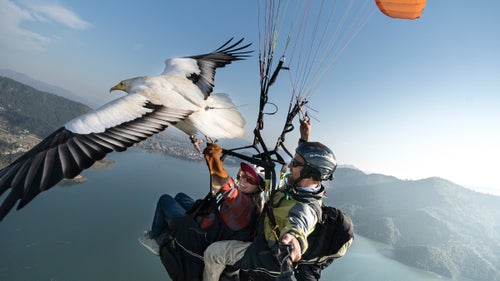
Paragliding high above a beautiful landscape is already a bucket list item, but doing it alongside an Egyptian vulture might bump it up to the top of the list. Pioneered by , who has been training birds since he was ten, parahawking consists of a trained vulture or hawk guiding a paraglider through thermals or air pockets in the sky for long, bird-like flights. The pilot or tandem companion holds some meat in a glove and sporadically rewards the bird with it. , originally founded in Pokhara, Nepal, and since moved to Algodonales, Spain, makes this experience available to tourists in hopes of raising support for birds of prey across the Europe and Asia.
Here, Mason takes us through a flight through the Himalayas with Bob, an Egyptian vulture, and fellow paraglider Cherise Tuttle.
Mason: Here, Tuttle and I make contact with Bob during a flight above Pokhara, Nepal. Rescued and rehabilitated raptors such as Egyptian vultures are trained under the Parahawking Project’s proven program. They learn to fly with paragliders and, by using their incredible ability to conserve energy, guide the paragliders to the best thermals.
Thermals are rising columns of warm air that are created when the sun heats the ground. They provide lift for paragliders and soaring birds such as vultures, allowing them to save energy. Because birds such as eagles, hawks, and vultures instinctively conserve energy while flying and have a natural ability to find thermals, they provide the perfect thermal marker for paragliders.
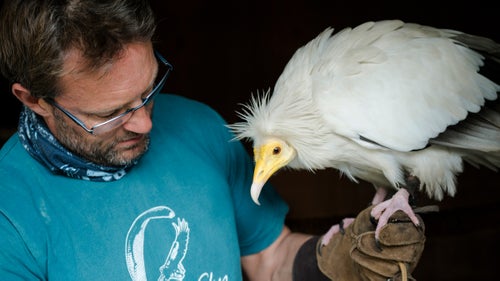
We start the day getting the birds out of their aviaries. This is Bob, a nine-year-old male Egyptian vulture, who is not an early riser.
Vultures are in serious decline. In the last 15 years, the numbers have dropped by a staggering 99 percent in some parts of Asia, with similar numbers following in Europe and Africa. One reason for such rapid decline is a veterinary drug called Diclofenac, which is an anti-inflammatory drug administered to sick and dying livestock to reduce pain and suffering. If vultures feed on an animal that dies with the drug still in its system, they typically die within 24 hours.
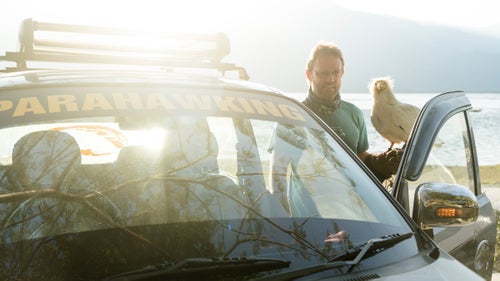
The best and quickest way to our launch site in Nepal is by car. Our birds happily ride shotgun with me while the passengers sit in the back. For most of my guests, it’s the first time they have shared a ride with a vulture.
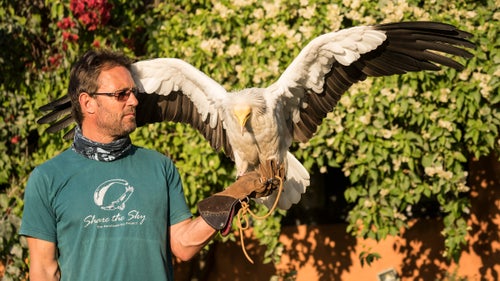
Bob shows off his six-foot wingspan, the very tool that allows him to glide effortlessly through the skies.
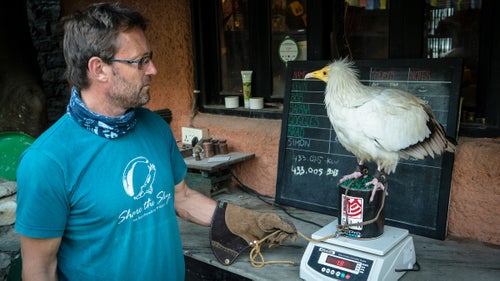
All of the birds are weighed and their food carefully monitored throughout their lives. This is to ensure they get a healthy balanced diet and are fit and capable of flying. The best weight can vary with each bird, for Bob it’s about 3.75 pounds. When their head feathers are standing upright as Bob’s are in this image, it’s a sign they are relaxed and content.

Mammoth Lakes, California-based paraglider Cherise Tuttle, listens closely during a pre-flight briefing. It’s important that whoever is holding the meat keeps it covered until the paraglider decides to offer the award as the birds have incredible eyesight and can see it from miles away.
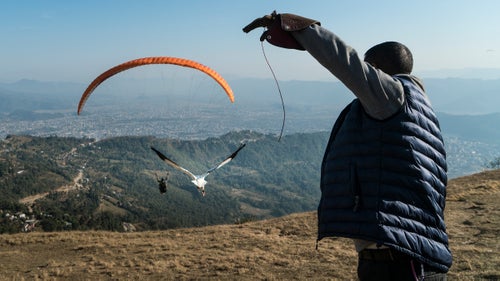
Our local driver in Nepal, Shiva, releases Bob just after we take off. The vulture quickly overtakes us and begins looking for thermals above Pokhara.
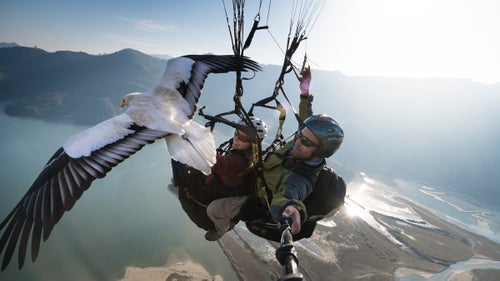
The Parahawking Project supports and hopes experiences with these birds in the air will only increase awareness of their importance.